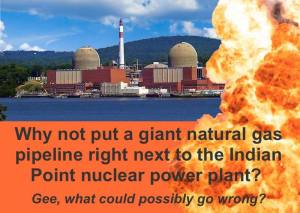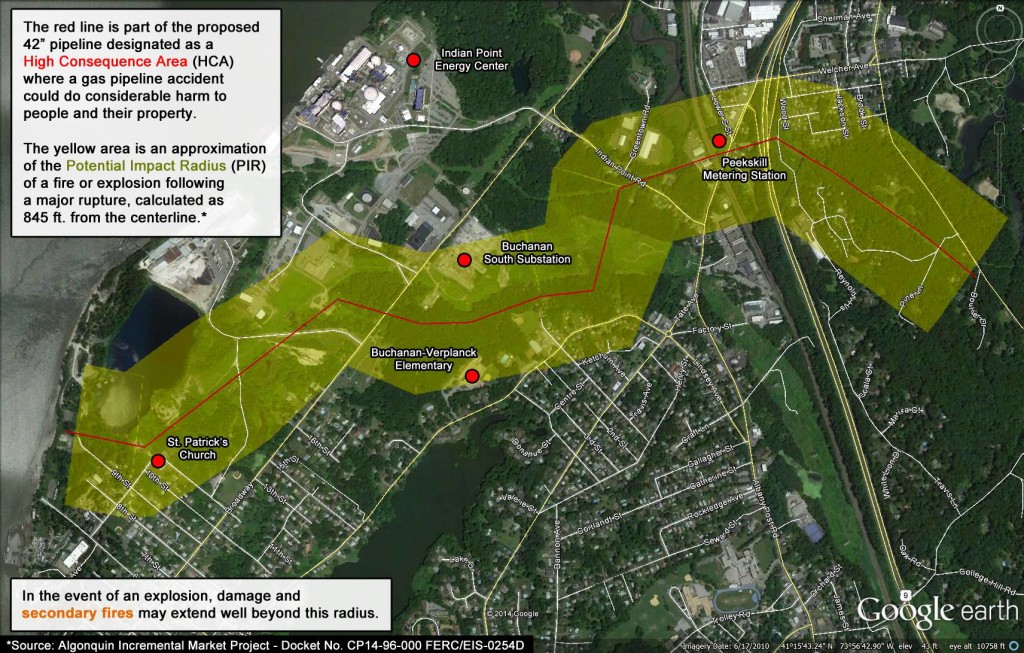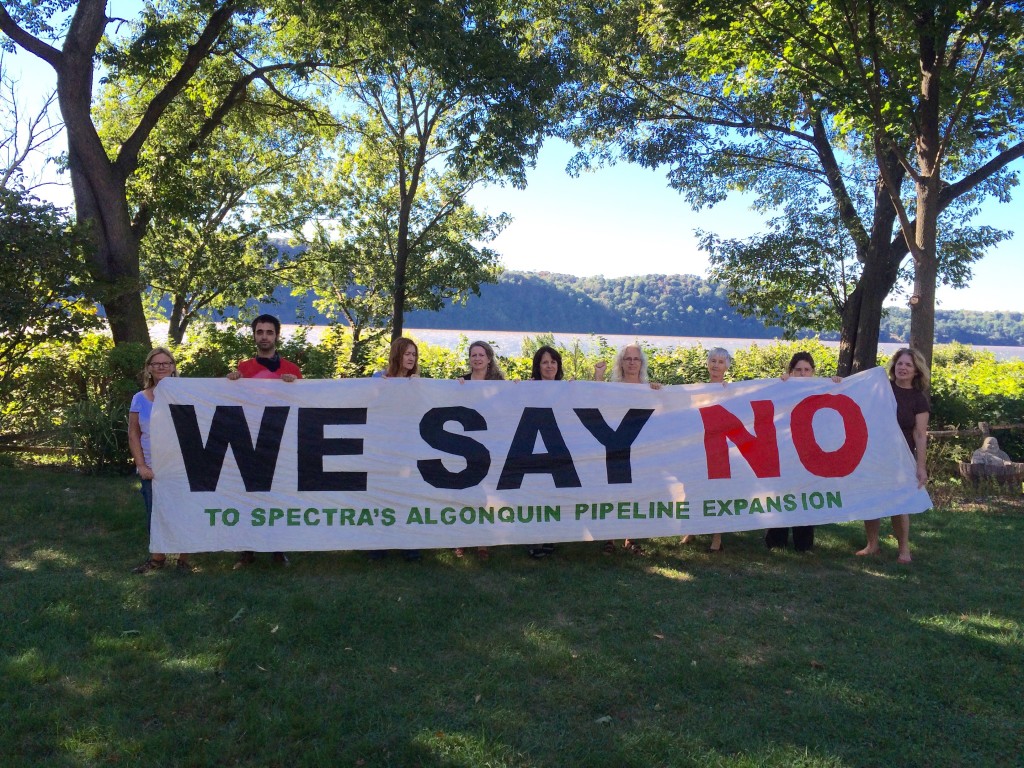My dad was an electrical engineer, but his undergrad degree was in physics. When I was studying physics in high school, if I asked my dad for help on a homework problem, he’d end up showing me how an equation was derived. All I wanted was the answer! I could care less about the ins and outs of physics.
Until now.
Because, now there is a 42″ high pressure methane pipeline invading my county. Methane is the technical term for what the industry likes to call “natural gas”. Methane, CH4, is highly explosive and flammable.
 Since Spectra Energy’s jumbo methane pipeline will be passing just 105 feet from critical structures at the aging Indian Point nuke plant, just 11 miles from my house, I’ve been wondering about how big an explosion would be if the pipe were to rupture.
Since Spectra Energy’s jumbo methane pipeline will be passing just 105 feet from critical structures at the aging Indian Point nuke plant, just 11 miles from my house, I’ve been wondering about how big an explosion would be if the pipe were to rupture.
I wish my dad was still alive to help me to determine this calculation. It’s just the sort of thing he would have loved to play with.
I stumbled upon a paper entitled:
A MODEL FOR SIZING HIGH CONSEQUENCE AREAS ASSOCIATED WITH NATURAL GAS PIPELINES
The rupture of a high-pressure natural gas pipeline can lead to outcomes that can pose a significant threat to people and property in the immediate vicinity of the failure location. The dominant hazard is thermal radiation from a sustained fire and an estimate of the ground area affected by a credible worst-case event can be obtained from a model that characterizes the heat intensity associated with rupture failure of the pipe where the escaping gas is assumed to feed a fire that ignites very soon after line failure.
It had interesting calculations on % fatalities vs. distance from pipeline along with formulas for predicting blast radius and high consequence areas (HCA for short).
So far, no elected official has had even a fraction of a chance of stopping this insane explosive pipeline from coming into my county. The rules enabling this pipeline were fixed in 2005 by a zombie evil-doer with no heart.
The only way to stop this pipeline is for US to stop it. You and me.
We are the ones we’ve been waiting for.
We’ve got to step up, get bigger, get louder and build a movement of resistance. Join us.





I am happy to learn of this paper. I never knew how the federal PIR formula was derived. This will take me some study.
One correction: It really has nothing to do with HCAs.
Without understanding the math yet, my first comments are as follows.
I don’t know what experimental evidence the author used to prove his formula, but I studied 5 accidents, the first 5 where I could get all the parameters, and in each case the federal formula underestimated the actual blast radius. Sometimes by a little (Sissonville, Carlsbad), and sometimes a lot (San Bruno, Appomattox, Cleburne).
The physical model seems wrong to me. The exponent of the pressure and radius term seems off by one to me. D*r^2 seems right. But why take the square root? Maybe. Heat flux follows inverse square law? Maybe.
And the threshold for heat flux the author picked seems arbitrary. He doesn’t explain it.
And clearly environmental conditions such a topology, dryness, presence of fuel source (trees, road, homes, dry vegetation), and length of the burn impacts the blast radius. The variance between the observed impact radius vs the predicted in the 5 cases I studied is all over the place. Clearly there are missing terms.
Bottom line is, IMO, you should take the results off the federal PIR formula and a) double it, and b) add 1,000’ft and take the max of those two, to be safe.
Also, the author seems to place all the impacts on heat flux, however I think there may be other forces at work, such as the initial shock wave (pressure flux) from the initial explosion.
Anyway, thanks again for posting this.
BH
Dear Bill, The point of the story is not the equation, but more about the fact that no one should put a high pressure explosive pipeline in close proximity to a school or a nuclear plant. I hope the non-science folks reading get this and join us in taking action to stop it. Thanks for your comment.